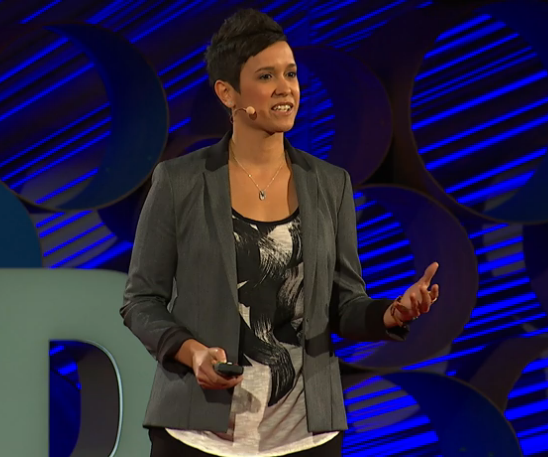Nothing can elicit an emotional response --
任何事物都無法像人體一樣
from joy to complete disgust -- more than the human body.
表達諸多情感--從快樂到厭惡至極。
And today, artists armed with that emotion,
當今,藝術家正運用這一情感,
are grasping anatomy from the medical world,
帶著解剖學從醫學走出來,
and are reinvigorating it through art in the most imaginative ways.
通過藝術的無限想象力讓解剖學煥然一新。
A perfect example of this is Spanish contemporary artist Fernando Vicente.
一個典型的例子是西班牙當代藝術家費爾南多·韋森特。
He takes 19th century anatomical illustrations of the male body
他將一副19世紀男性解剖插畫
and envelops them in a female sensuality.
用女性的感性重新呈現。

The women in his paintings taunt us to view beyond their surface anatomy,
畫中的女性迫使我們揭開表皮一探究竟,
thereby introducing a strong femininity that was previously lacking in the history of anatomical representation.
透著一股濃郁的女性氣質,在以前的解剖表現手法中前所未見。
Artistry can also be seen in the repair and recovery of the human body.
藝術技巧還能體現在人體修復上。
This is an X-ray of a woman who fractured and dislocated her ankle in a roller-skating accident.
這張X光片的主人是位女性,輪滑時摔傷,導致踝關節骨折錯位,
As a tribute to her trauma,
為了紀念這場災難,
she commissioned Montreal-based architect Federico Carbajal to construct a wire sculpture of her damaged lower leg.
她請求蒙特利爾建筑師費德里科·卡瓦哈爾用金屬絲給她受傷的小腿做雕塑。
Now, notice those bright red screws magnified in the sculpture.
請注意這些放大的紅色螺絲釘,
These are the actual surgical screws used in reconstructing her ankle.
那都是腳踝重塑手術中使用過的醫用螺絲釘。
It's medical hardware that's been repurposed as art.
醫療器械在藝術中被重現了。











